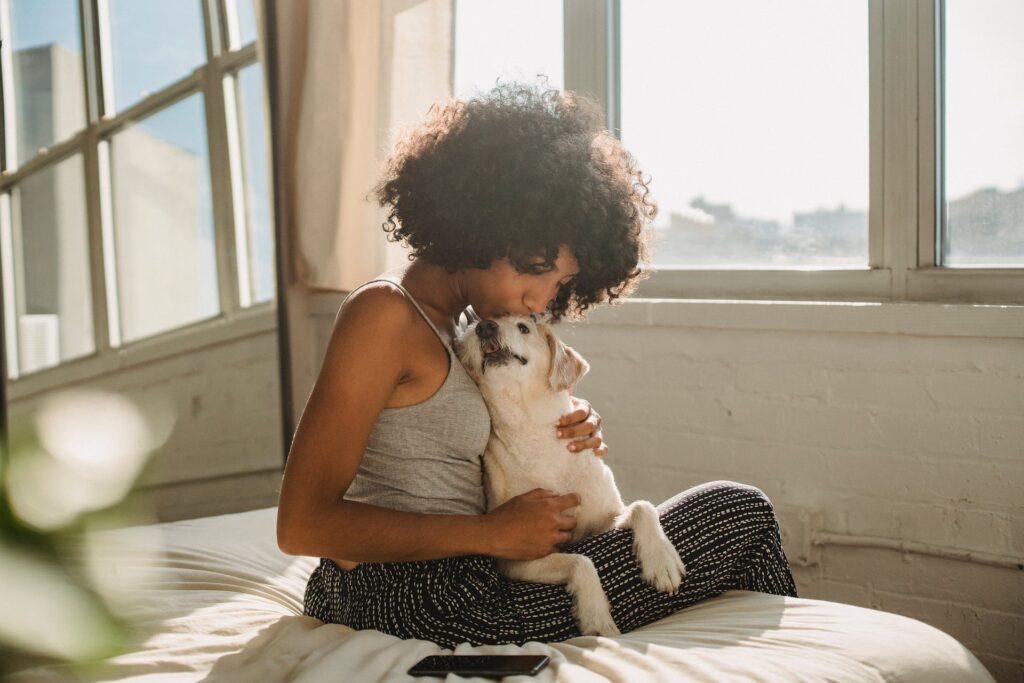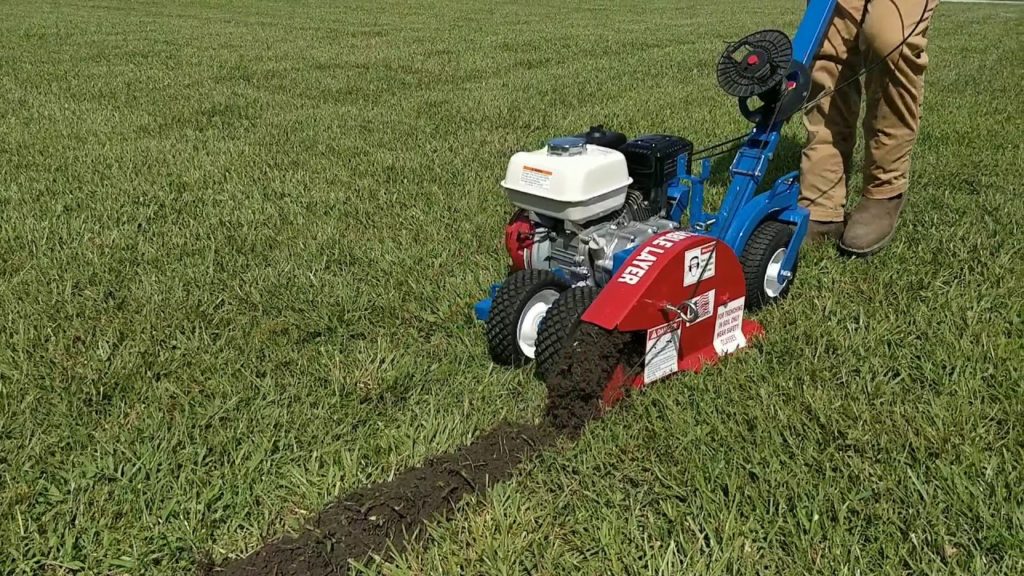On the first day of training, focus on building your pet’s awareness of the boundaries using the tone only training mode on the Receiver Collar. Plan for 3 sessions, each lasting 10-15 minutes.
Start by programming the Static Correction Level on the Receiver Collar to Level 1, tone only training mode. Begin by walking your pet on a leash in the containment area, using calm praise and talking to your pet as you move towards the Boundary Flags to create a positive mood.
With full control of your pet on the leash, walk towards the Boundary Flags. As your pet enters the containment area, the Receiver Collar will emit a warning beep. Allow your pet to stay in the boundary zone for up to 2 seconds, and then gently guide them out of the containment area. Immediately praise your pet and offer a treat when you move outside of the new boundary zone.
Repeat this process at the same Boundary Flag, and then move on to another flag. Aim to master 3-4 Boundary Flags per session, and try to make it fun for your dog! By the end of each training session, your pet should be comfortable near the Boundary Flags.
To test your pet’s comfort level, spend at least 5 minutes of “play time” within 10 feet of the Boundary Flags at the end of each training session. This will help reinforce their understanding of the boundaries and build their confidence.
During days 2 to 4 of training, continue with 3 sessions of 10-15 minutes each day to reinforce boundary awareness and introduce the static correction feature. Set the static correction level on the Receiver Collar to Level 2.
Repeat the steps from Phase One, walking your pet on a leash towards the Boundary Flags. If your pet does not respond to the static correction, first confirm that the Receiver Collar is properly fitted. If it is, and your pet still does not respond, increase the static correction level by 1. Watch for subtle reactions such as ears up, head turned, or looking at the ground to gauge your pet’s response to the correction.
Stay at the same Boundary Flag until your pet resists going into the Boundary Zone, indicating that they have learned to respect the boundaries. This phase of training focuses on reinforcing the importance of staying within the containment area and understanding the consequences of crossing the boundaries.
During days 5 to 8 of training, continue with 3 sessions of 10-15 minutes each day, focusing on the distraction phase. The goal is to train your pet to stay within the containment area even when faced with distractions outside the safe zone. Set the static correction level on the Receiver Collar to Level 2 or higher, based on your pet’s reaction during days 2 to 4.
Create distractions while keeping full control of your pet on a leash. Avoid coaxing or calling your pet out of the safe zone. Use various distractions such as having a family member cross from inside to outside the containment area, throwing a ball or treat outside the safe zone, or having a neighbor walk their pet outside the yard.
If your pet does not move towards the distraction, praise and offer a treat. If your pet reacts to the distraction and tries to cross the boundary, gently guide them back into the containment area. Praise and treat your pet every time they return to the containment area, whether with or without assistance.
Repeat this process with different distractions, gradually increasing the distraction level as your pet becomes more proficient in ignoring distractions and staying within the containment area on their own. If your pet does not respond to the static correction, first confirm that the Receiver Collar is properly fitted. If it is, and your pet still does not respond, increase the static correction level by 1, avoiding increments of more than 1 at a time. If your pet shows signs of fear or distress, go back to the previous level.
Finish each training session on a positive note with plenty of praise and play, even if you feel your pet is responding well to the training. Reinforcement is crucial for solidifying the training.
During days 9 to 14 of training, continue with sessions lasting 10-15 minutes, gradually increasing to over an hour. However, only progress to this step when your pet consistently avoids the entire Boundary Zone, regardless of distractions or temptations, indicating that he is ready for unleashed supervision.
During this phase, it’s important not to leave your pet unattended. The goal is to allow your pet to have free run of the containment area off leash, while still being closely monitored.
With your pet wearing the Receiver Collar at the appropriate static correction level, walk around and play with your pet within the containment area. Let your pet also play and explore on his own, while keeping a close eye on him to ensure he stays within the safe zone.
Continue to reinforce the boundaries and reinforce positive behavior with praise and treats. If your pet shows any signs of attempting to cross the Boundary Zone, gently guide him back into the containment area and offer positive reinforcement when he complies.
Be diligent in supervising your pet during this phase and gradually increase the duration of off-leash supervision as your pet consistently demonstrates respect for the containment boundaries. Remember to always prioritize safety and closely monitor your pet’s behavior during this phase of training.
During days 15 to 30 of training, your pet is ready to enjoy off-leash freedom within the containment area. However, it’s important to continue monitoring your pet to ensure he stays within the designated boundaries.
You don’t need to be outside with your pet at all times, but keep an eye on him from a distance to make sure he stays within the containment zone. Observe his behavior and intervene if he attempts to cross the boundaries.
Once you feel confident that your pet understands and respects his boundaries, you can start removing every other Boundary Flag every 4 days. This gradual process helps your pet transition from visual cues to relying on his learned boundaries without the flags.
Remember to save the removed flags in case you need them for training another pet in the future or to retrain your current pet if you move to a new home. Consistency and ongoing monitoring during this phase will help solidify your pet’s understanding of the containment area and reinforce his good behavior.




0 Comments